Abstract
A rapidly eliminated vital dye, available under the names Coomassie blue (CB) and Fast Cyanine (FC), has been found suitable for the demonstration of local anaphylactic reactions in mice and guinea-pigs. Like other dyes used for this purpose, circulating CB/FC does not readily escape through the blood vessel walls except at sites of increased capillary permeability, as in local anaphylaxis. The blue-mauve colour obtained with CB/FC is almost as vivid as that given by Pontamine Sky blue, and is as sensitive an indicator of both cutaneous and pinnal anaphylaxis.
CB/FC can be given both intravenously and intraperitoneally for the demonstration of local anaphylaxis, and disappears from the animal, both locally and systemically, within 3–6 hours. Animals cleared of CB/FC can be re-dyed and re-challenged repeatedly. Other factors being equal, response at newly reactive sites are as good as those obtained originally at the initially reacted sites.
Use has been made of the non-persistence of CB/FC in three situations requiring repeated challenge of the same animal: the development of pinnal anaphylactic sensitivity following antigen injection in mice; the effect of challenge by one antigen on the anaphylactic reactivity of a dually passively sensitized skin site on subsequent challenge with the same, or the other, antigen; and the effect of single antigen challenge on the pinnal anaphylactic reactivity of the ears of dually actively sensitized animals on subsequent challenge with the second antigen. In these investigations CB/FC has made it possible to challenge a single animal repeatedly, without interference of residual dye colour from previous challenges. This should make possible a more direct approach to problems in anaphylaxis which are best studied by repeated local reaction visualized by dye.
Full text
PDF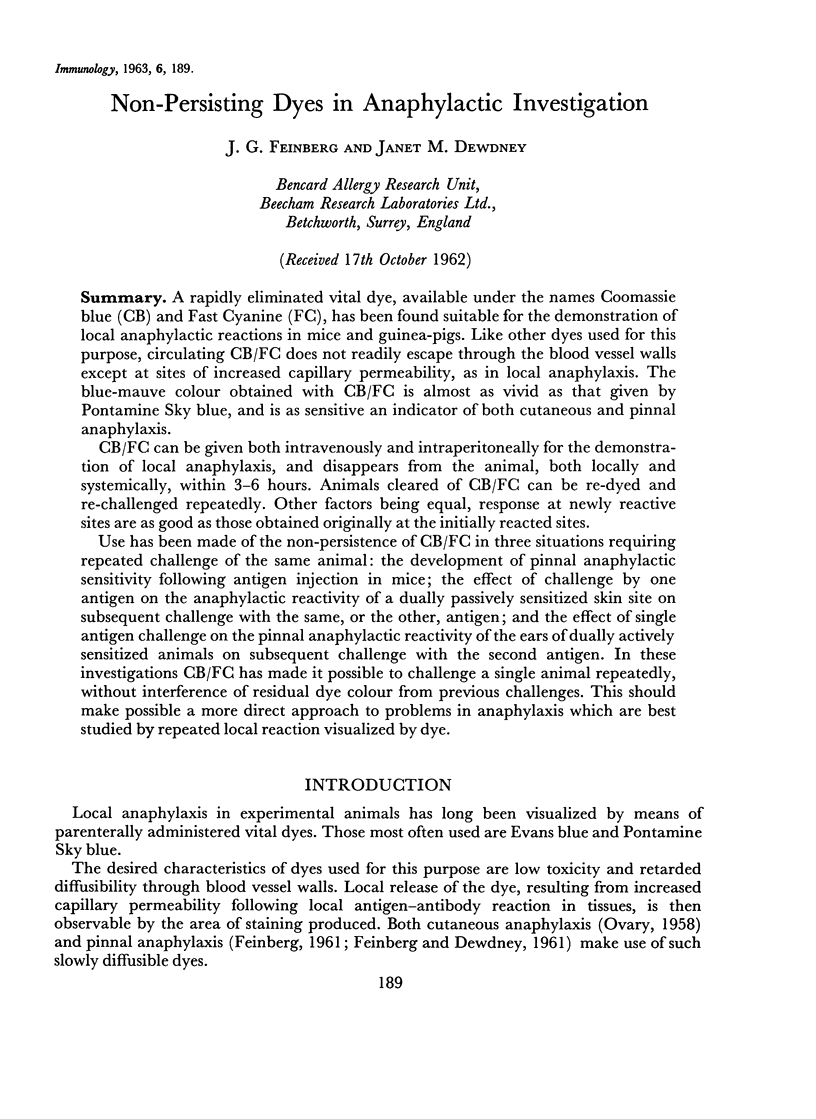
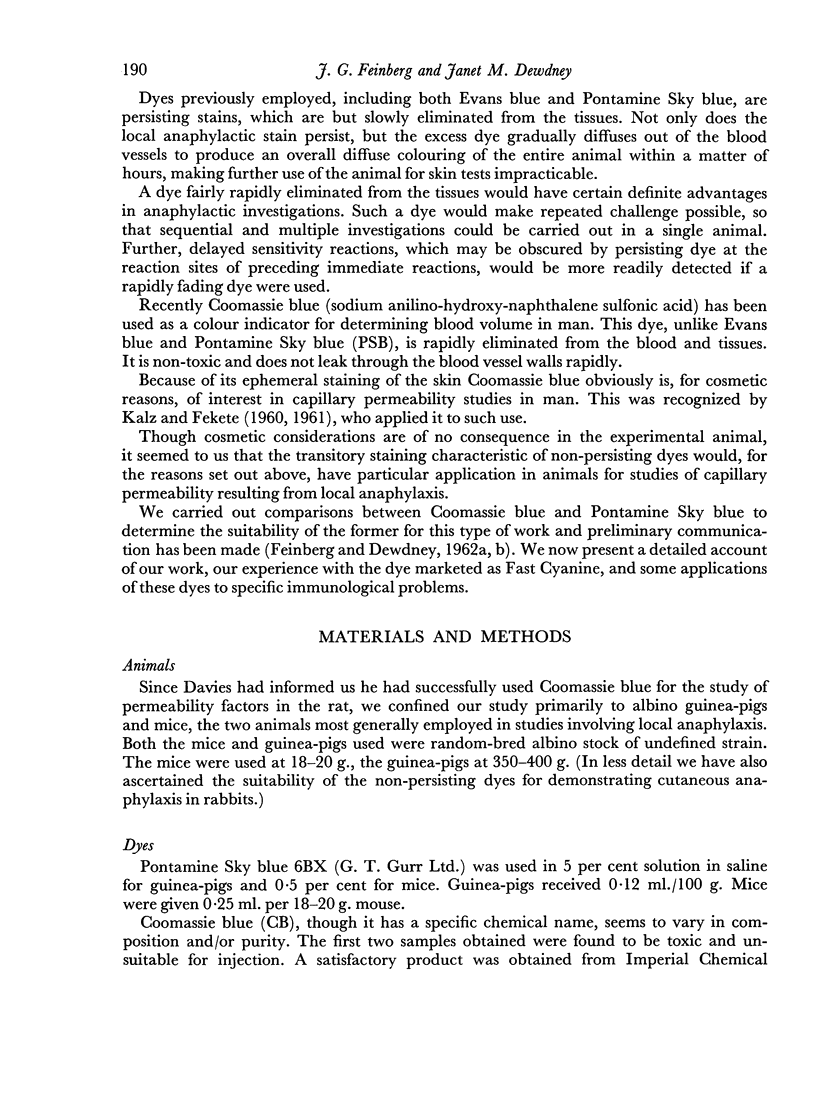
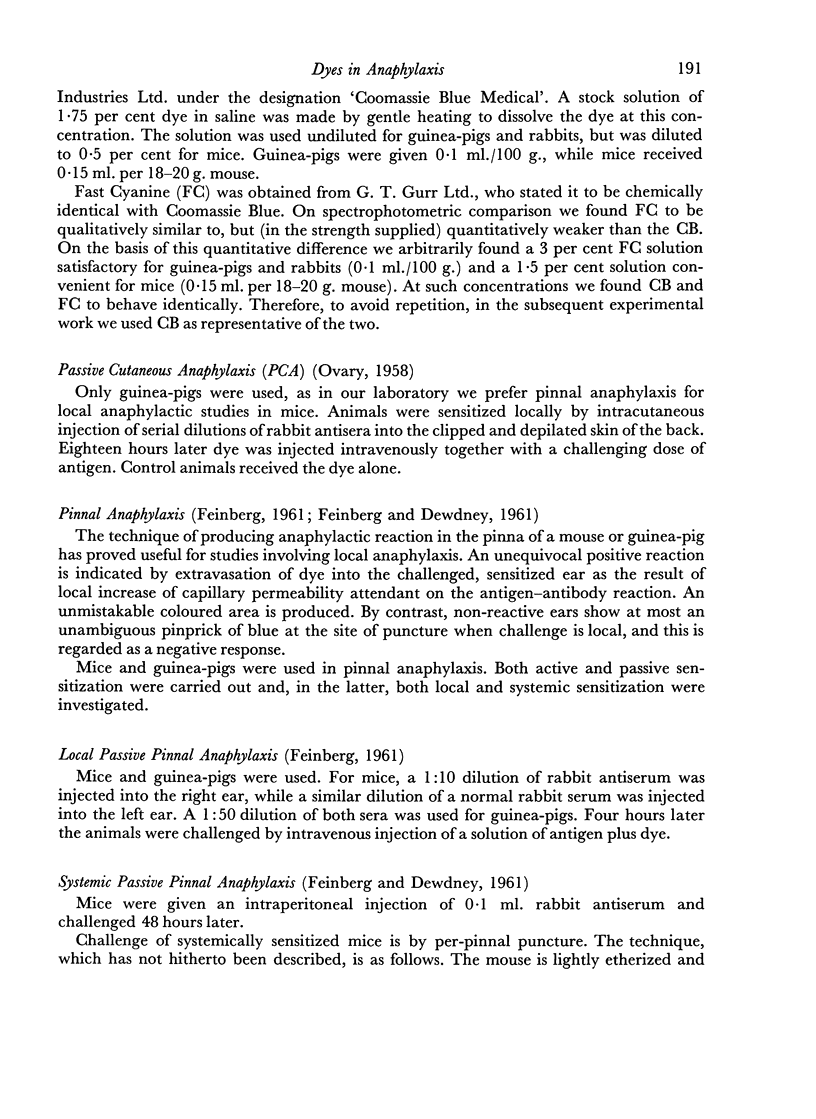
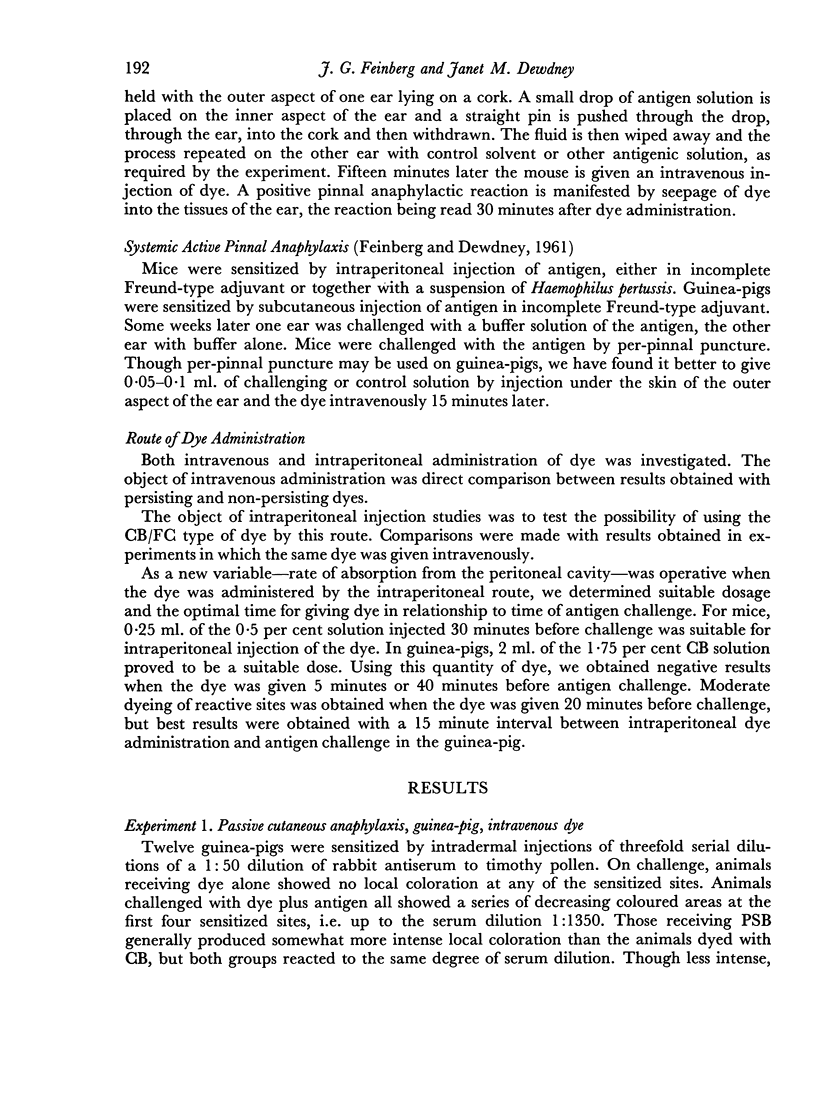
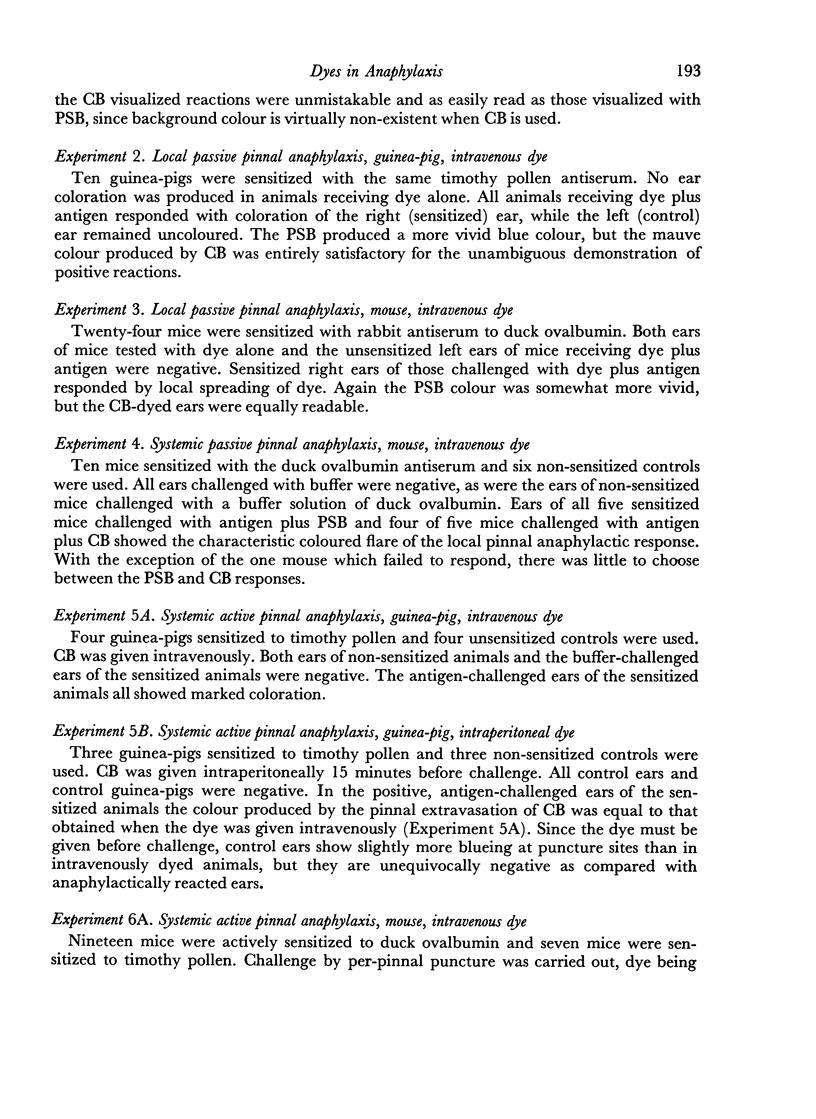
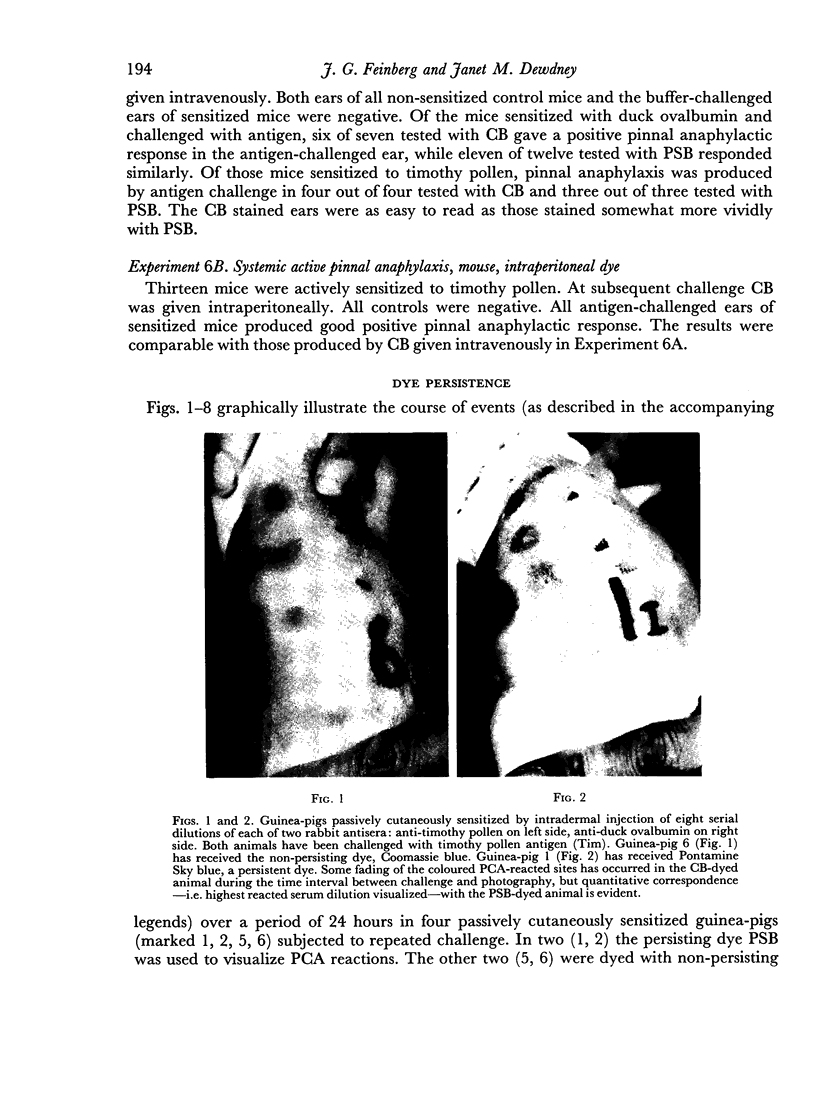
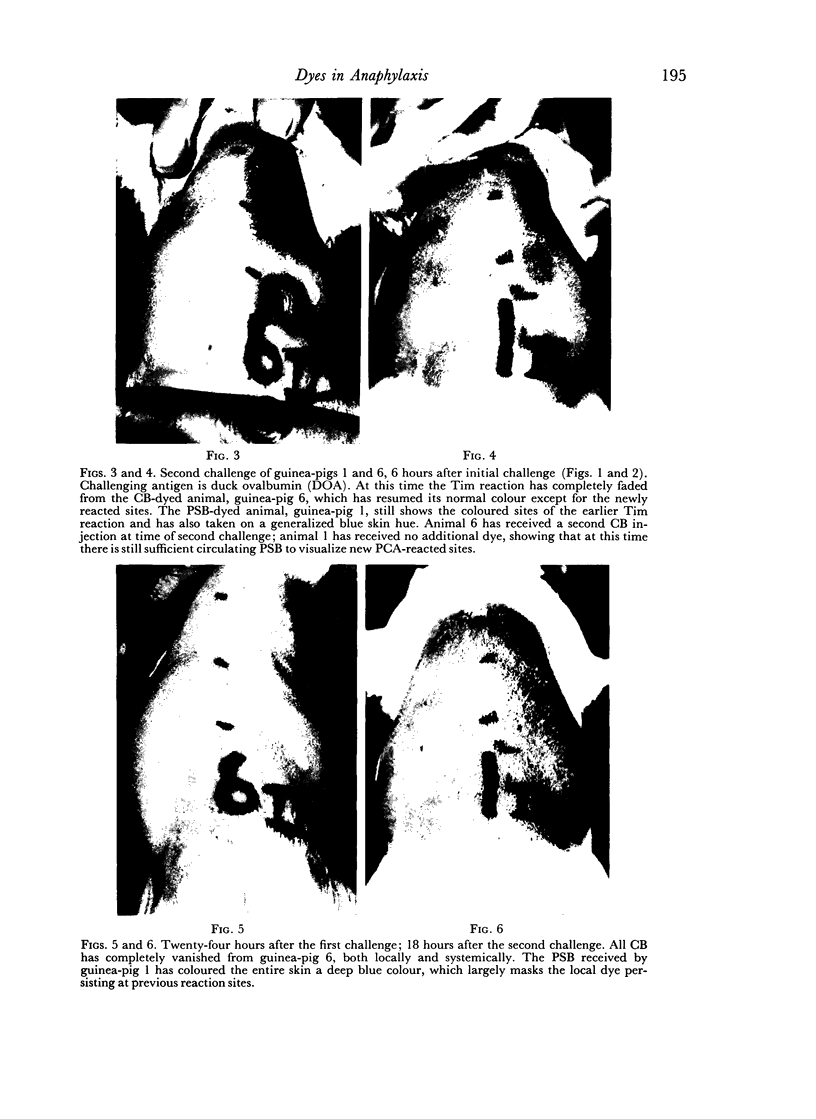
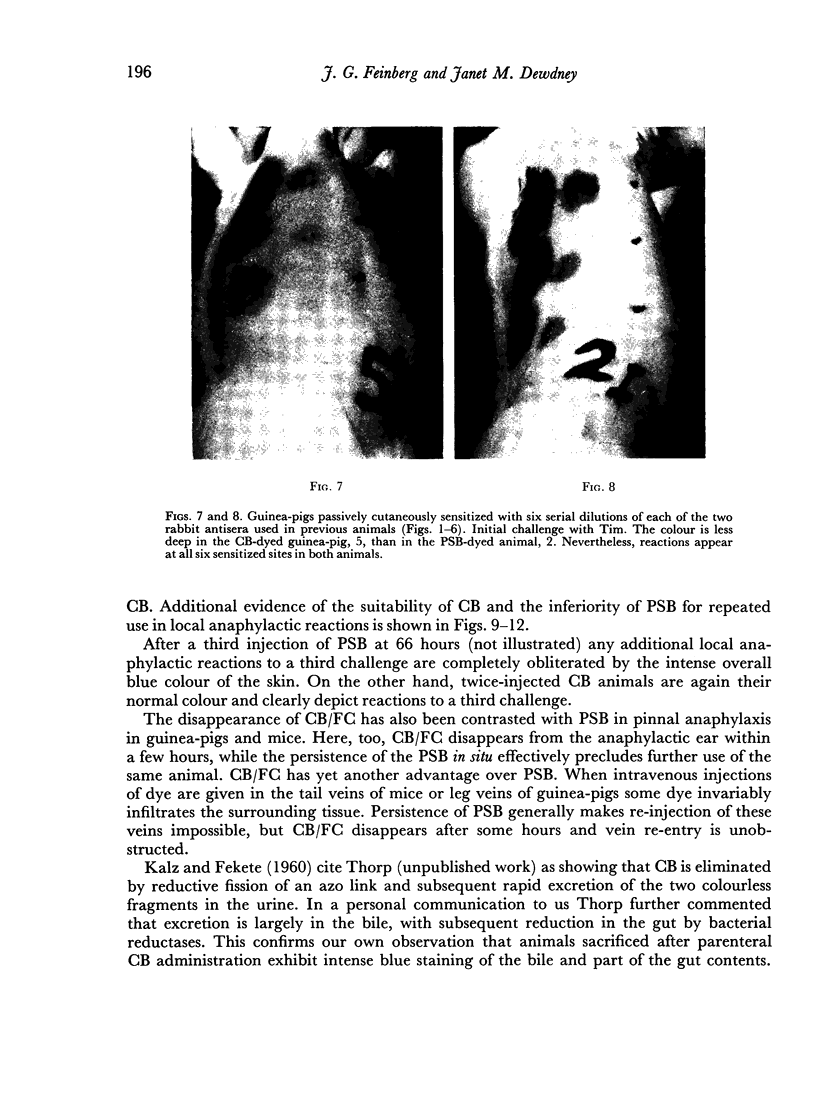
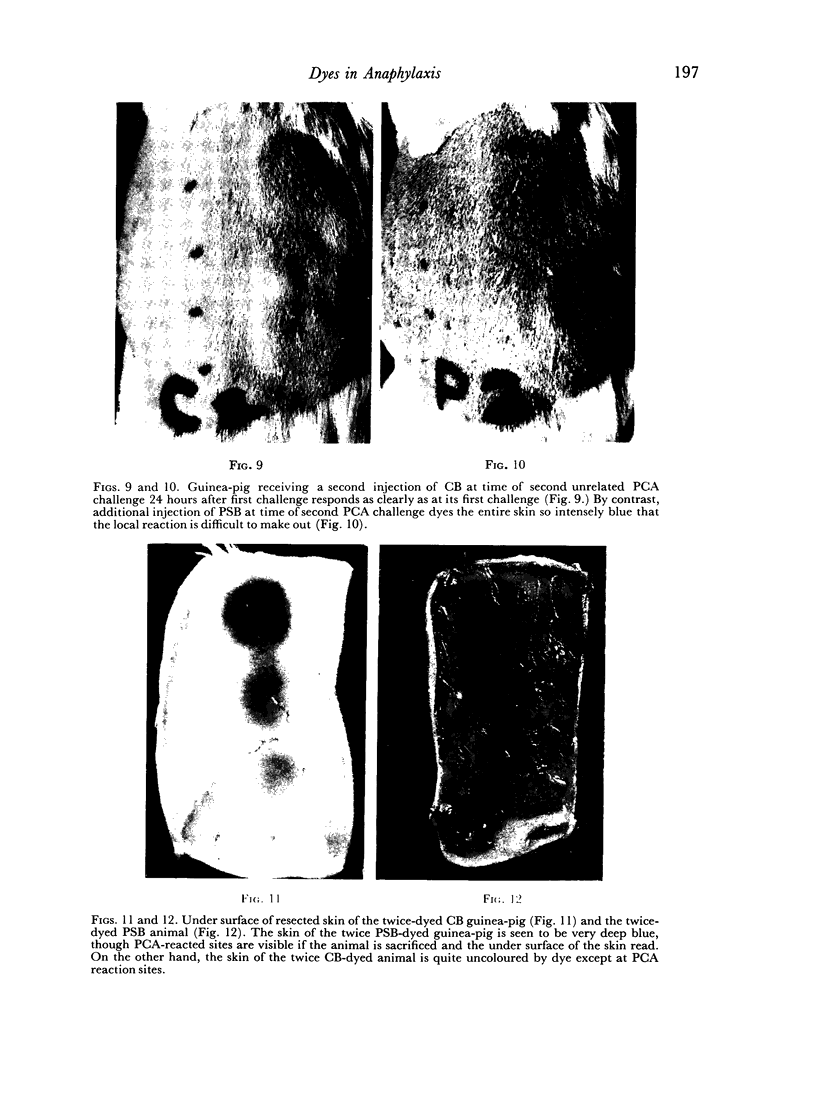
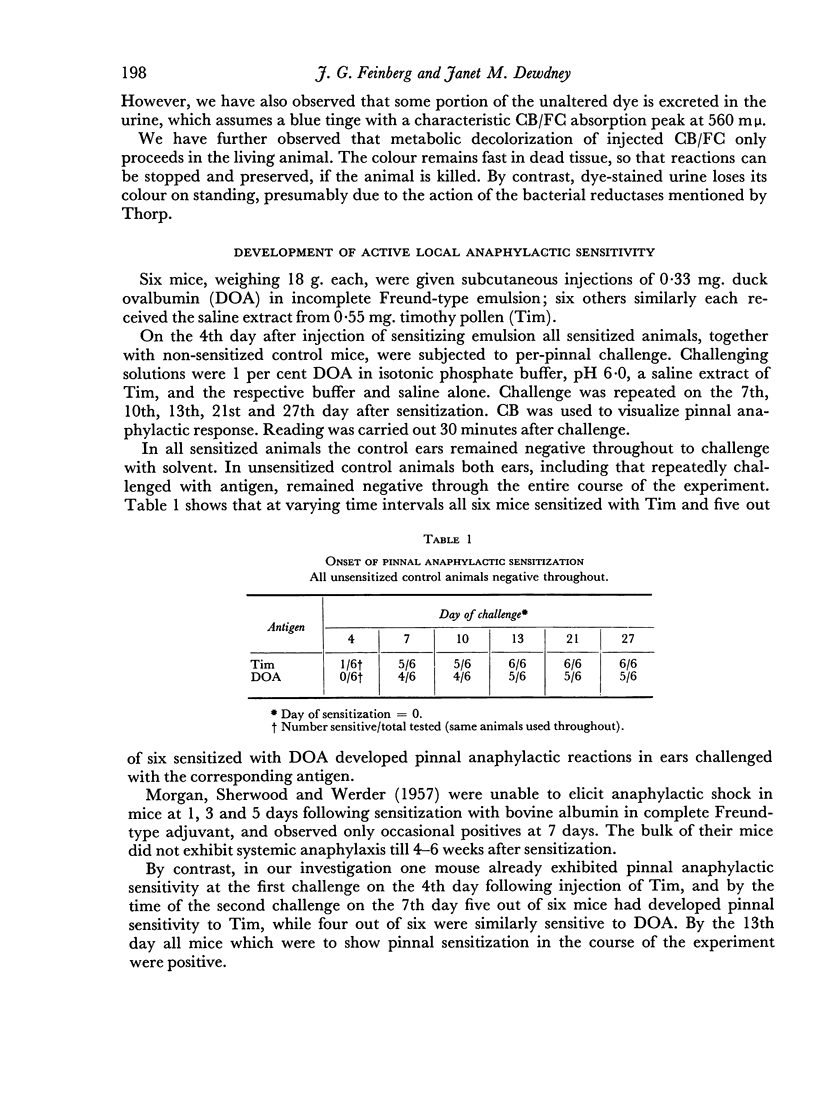
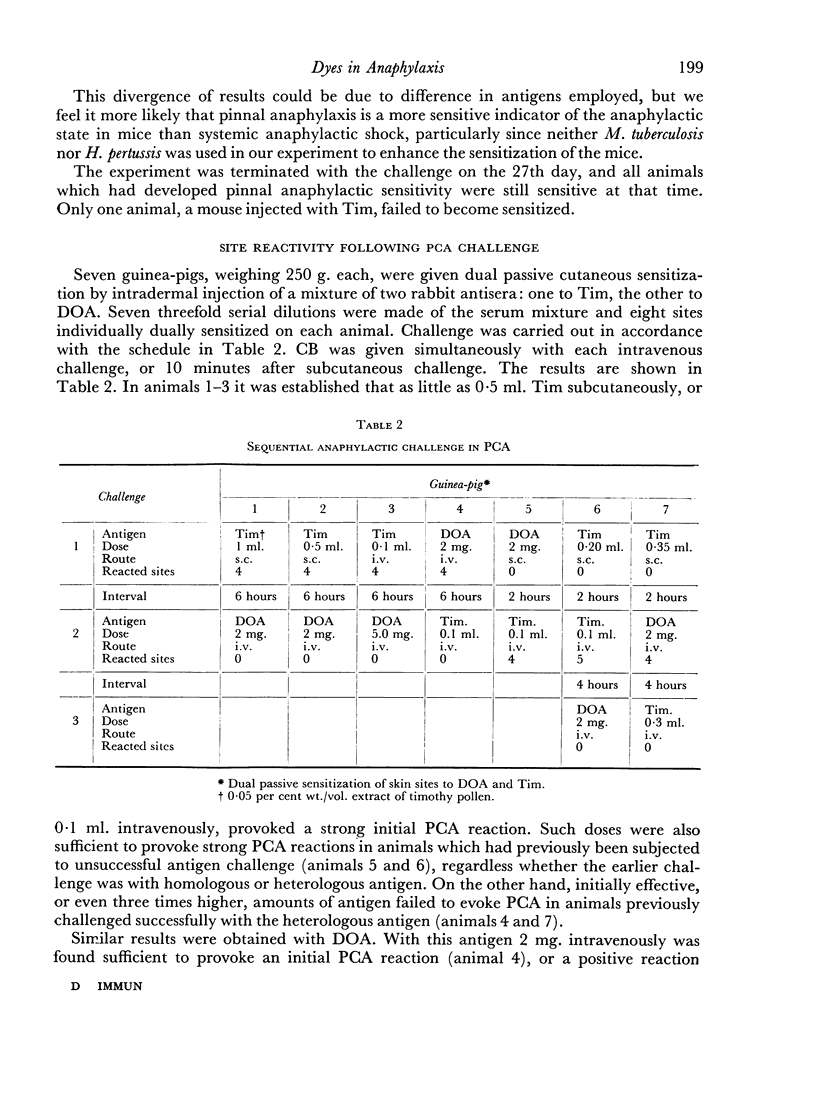
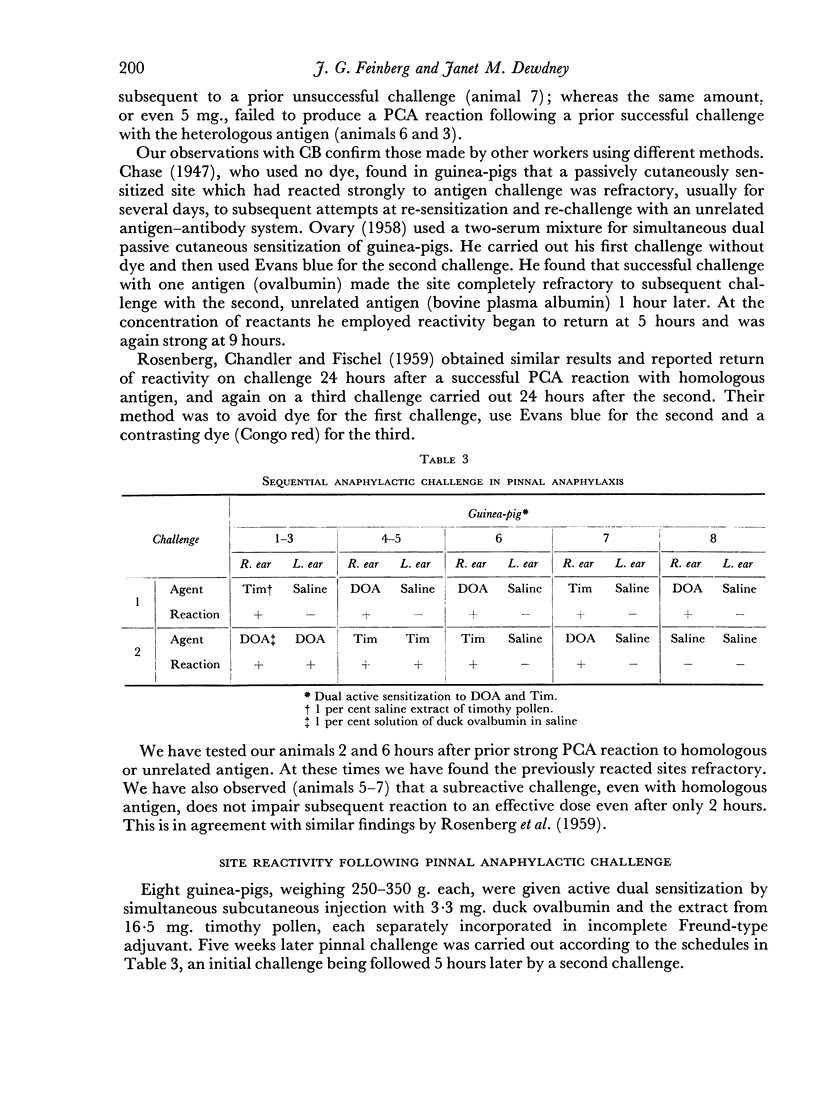
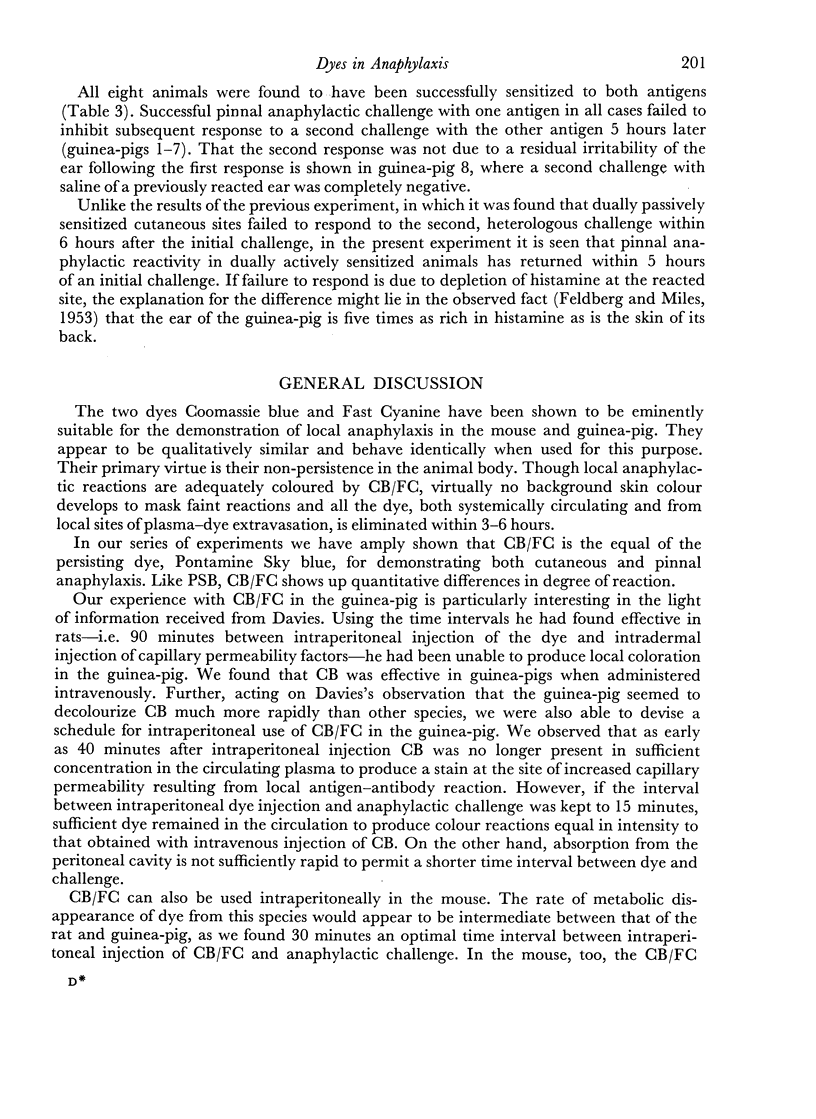
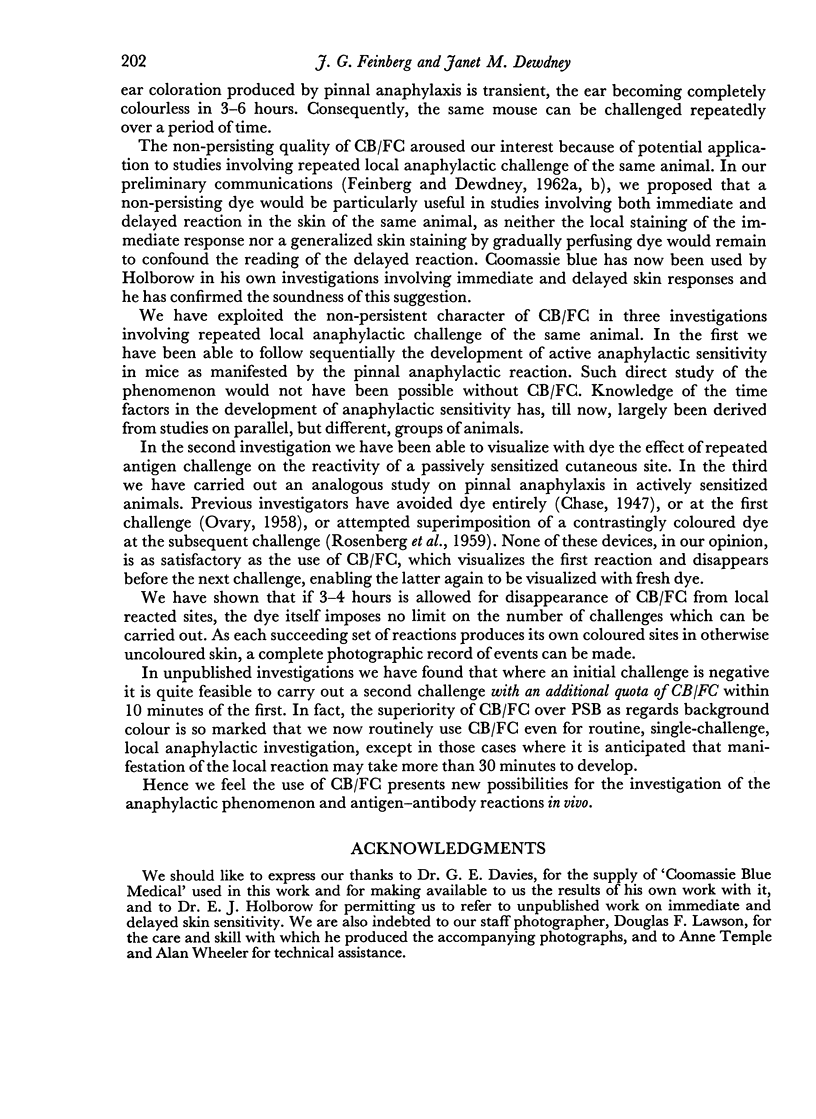
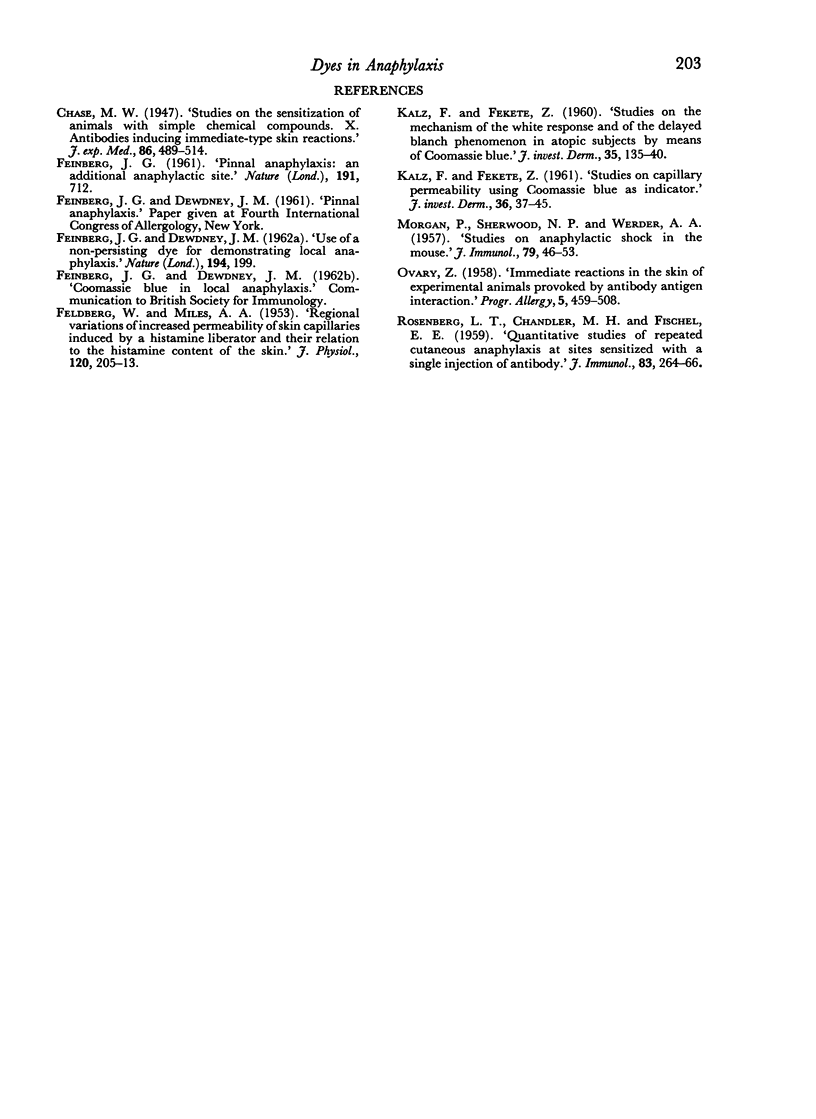
Images in this article
Selected References
These references are in PubMed. This may not be the complete list of references from this article.
- FEINBERG J. G. Pinnal anaphylaxis: an additional anaphyiactic site. Nature. 1961 Aug 12;191:712–712. doi: 10.1038/191712a0. [DOI] [PubMed] [Google Scholar]
- FELDBERG W., MILES A. A. Regional variations of increased permeability of skin capillaries induced by a histamine liberator and their relation to the histamine content of the skin. J Physiol. 1953 Apr 28;120(1-2):205–213. doi: 10.1113/jphysiol.1953.sp004885. [DOI] [PMC free article] [PubMed] [Google Scholar]
- HILL M. Spontaneous agglutination and haemolysis in acidified serum of erythrocytes from irradiated mice. Nature. 1962 Apr 14;194:199–200. doi: 10.1038/194199b0. [DOI] [PubMed] [Google Scholar]
- KALZ F., FEKETE Z. Studies on capillary permeability using Coomassie blue as indicator. J Invest Dermatol. 1961 Jan;36:37–45. [PubMed] [Google Scholar]
- KALZ F., FEKETE Z. Studies on the mechanism of the white response and of the delayed blanch phenomenon in atopic subjects by means of Coomassie blue. J Invest Dermatol. 1960 Sep;35:135–140. doi: 10.1038/jid.1960.97. [DOI] [PubMed] [Google Scholar]
- MORGAN P., SHERWOOD N. P., WERDER A. A. Studies on anaphylactic shock in the mouse. J Immunol. 1957 Jul;79(1):46–53. [PubMed] [Google Scholar]
- OVARY Z. Immediate reactions in the skin of experimental animals provoked by antibody-antigen interaction. Prog Allergy. 1958;5:459–508. [PubMed] [Google Scholar]
- ROSENBERG L. T., CHANDLER M. H., FISCHEL E. E. Quantitative studies of repeated cutaneous anaphylaxis at sites sensitized with a single injection of antibody. J Immunol. 1959 Sep;83:264–266. [PubMed] [Google Scholar]








